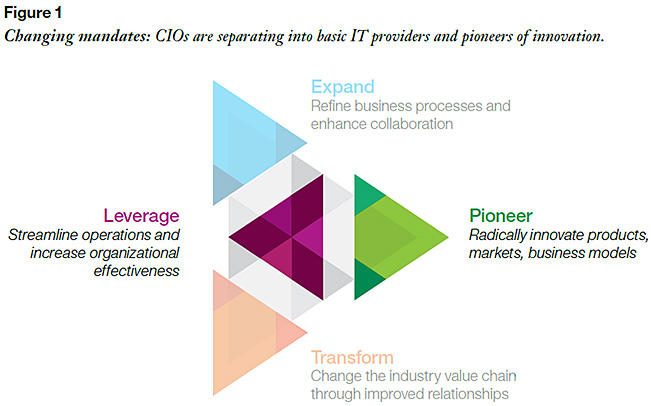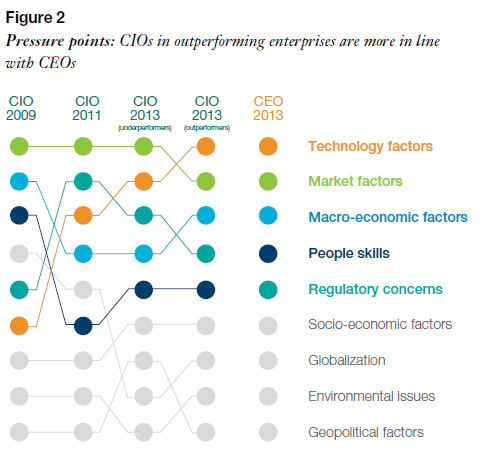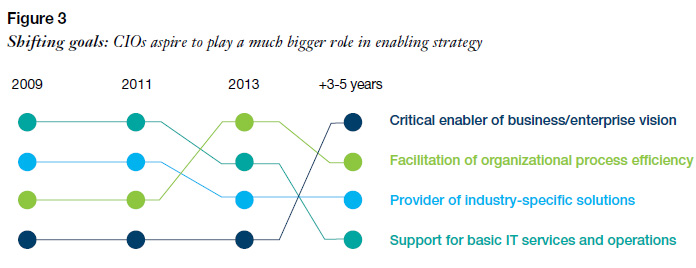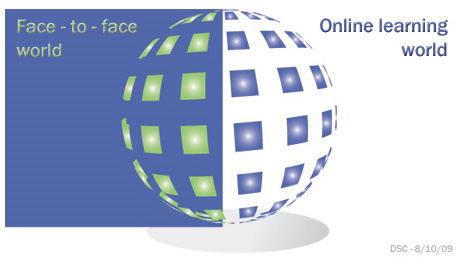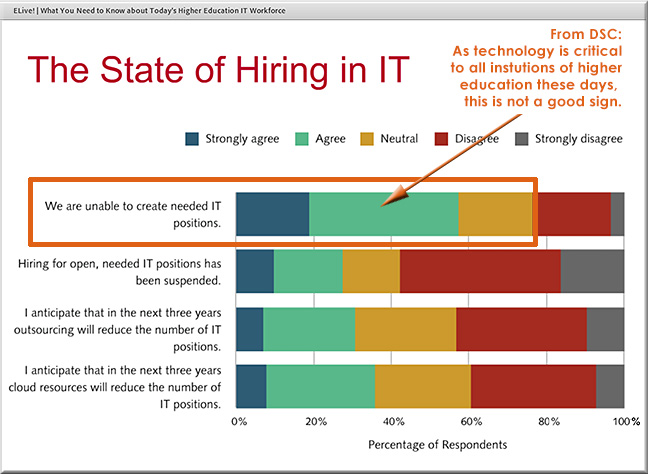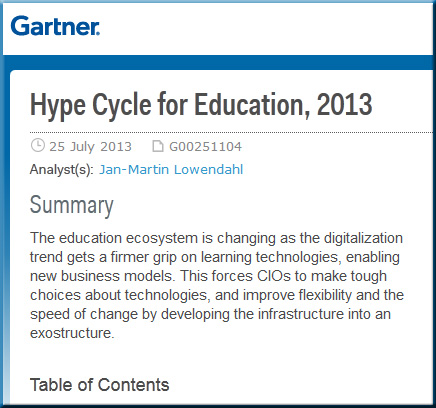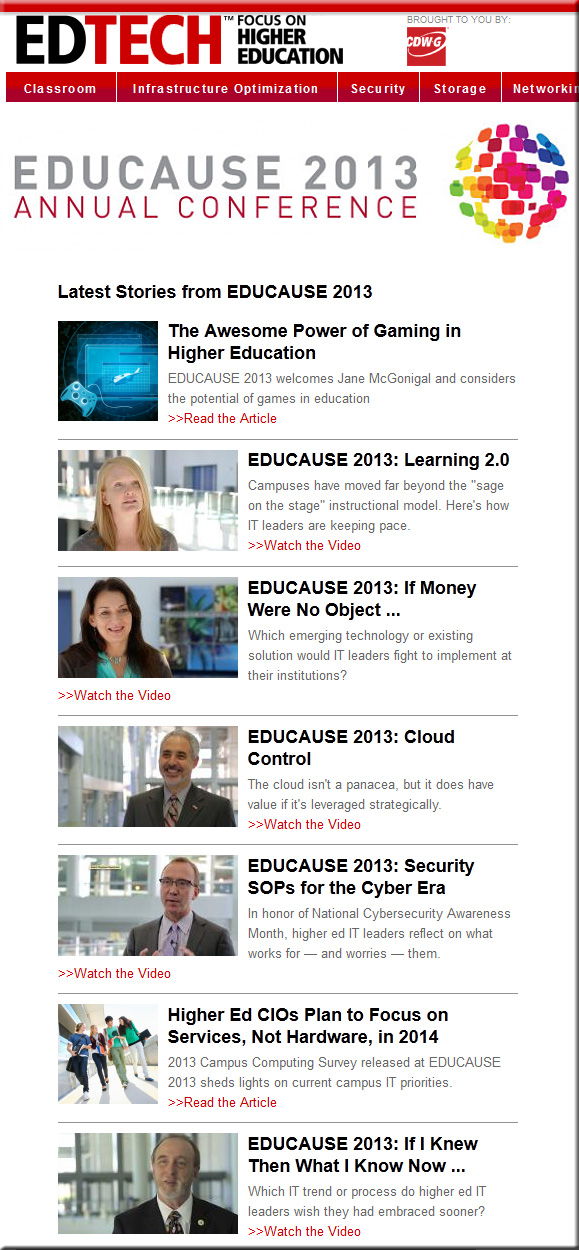IT under pressure: McKinsey Global Survey results — from mckinsey.com by Naufal Khan and Johnson Sikes
Recognition of IT’s strategic importance is growing, but so is dissatisfaction with its effectiveness, according to our eighth annual survey on business and technology strategy.
Excerpts (emphasis DSC):
More and more executives are acknowledging the strategic value of IT to their businesses beyond merely cutting costs. But as they focus on and invest in the function’s ability to enable productivity, business efficiency, and product and service innovation, respondents are also homing in on the shortcomings many IT organizations suffer. Among the most substantial challenges are demonstrating effective leadership and finding, developing, and retaining IT talent.
These are among the key findings from our most recent survey on business technology, which asked executives from all functions about their companies’ priorities for, spending on, and satisfaction with IT. Overall, respondents are more negative about IT performance than they were in 2012 and, notably, IT executives judge their own effectiveness more harshly than their business counterparts do. Compared with executives from the business side, they are more than twice as likely to suggest replacing IT management as the best remedy.
From DSC:
It seems to me that an organization or team can’t expect to extract significant value from someone or something that they haven’t cultivated. That is, a sports team shouldn’t expect a player who has sat on the bench most of the year to come in and light the world on fire. That player needs actual time playing in the games/matches/meets/etc. They need experience. They need practice in developing strategy as well as some experiments — to find out what’s working and what’s not.
IT organizations are key these days; and becoming more important in leading the organizations that they function in. It is short-sighted not to develop IT employees in both technical and business-related skills. As our world is increasingly being impacted by technological advances (occurring at exponential — not linear — trajectories), those companies who have leadership from the technical sides of the house should do quite well in the future.
Key items to work on:
- Creating tighter integrations with the rest of the business/organization; get more IT-based reps into situations where they can pull up chairs at more business-oriented tables/discussions/projects (product development/R&D, sales, marketing, customer service, other); affect the culture of the organization so that they can actually lead the organization
- Develop innovative, strategic thinking — thinking BIG!
- Understanding the changing landscapes and what opportunities might exist as a result of those changing landscapes
- Ability to develop potential scenarios and form responses to those scenarios
- Stop thinking about cutting costs, start using your skills/knowledge to develop new income streams, new products, and new markets! Stop seeing IT departments as cost centers, but rather key revenue generators!
- Moving more visionaries and those with the ability to persuade/sell into the IT organization
- Create/give IT staff more chances to get in the game!
Regarding the graphic below:

IT-based personnel should be kicking out a lot more new, innovative products and services. That’s where their new/additional value should come from. But that doesn’t seem to be happening.
Why is that? Is the rest of the business so used to looking at IT in certain ways? Does IT have a seat at the senior-most level/table? Are folks in the business listening or even approaching IT for their input? Are some cultural changes necessary?
Also see:
CIO ‘confessions’: 5 critical attributes of the best IT leaders — from hp.com
A new book profiles leading CIOs to learn how they thrive. It’s not about technology—it’s about guts.
What: CIOs are taking on more and more responsibilities, and while technology matters, leadership makes all the difference.
Why: Tech trends come and go, but the challenge of bridging the gap between IT and the business—and demonstrating how IT can deliver real value—remain the heart of the job.
More: Read Confessions of a Successful CIO, set for March 2014 release.
By the way, all of this is true within the world of higher education as well. Consider, for example, the need for IT/technical leadership in the worlds of online learning, blended learning, distance education, as well as in creating new revenue streams based upon technologies and the affordances that these technologies provide.
Also see:
Top 10 Strategic Issues for Boards, 2013-2014 — from The Association of Governing Boards of Universities and Colleges
Excerpt (emphasis DSC):
Those top issues include:
- The Revenue Model
- Productivity and Efficiency
- Student Aid
- Educational Delivery
- Student Learning
- Student Success
- Market and Mission
- The Academic Workforce
- Globalization
- Institutional Risk
Top-Ten IT Issues, 2014: Be the Change You See — from educause.edu by Susan Grajek
Excerpt (emphasis DSC):
- Improving student outcomes through an institutional approach that strategically leverages technology
- Establishing a partnership between IT leadership and institutional leadership to develop a collective understanding of what information technology can deliver
- Assisting faculty with the instructional integration of information technology
- Developing an IT staffing and organizational model to accommodate the changing IT environment and facilitate openness and agility
- Using analytics to help drive critical institutional outcomes
- Changing IT funding models to sustain core service, support innovation, and facilitate growth
- Addressing access demand and the wireless and device explosion
- Sourcing technologies and services at scale to reduce costs (via cloud, greater centralization of institutional IT services and systems, cross-institutional collaborations, and so forth)
- Determining the role of online learning and developing a strategy for that role
- Implementing risk management and information security practices to protect institutional IT resources/data and respond to regulatory compliance mandates*
- Developing an enterprise IT architecture that can respond to changing conditions and new opportunities*
* Tie












